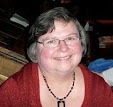Sitting on the top of the NY Times Best Sellers List for the last two years is the complex novel of wartime France and Germany. But All the Light We Cannot See is so much more than that. It has been sitting on my bookshelf since its publication and the impetus to read it now comes from the lecture to be held 4 April 2016 as part of the Ten Literary Evenings of the Pittsburgh Arts and Lecture series.
The basic premise (if there can be such a concept) of Doerr's work is the parallel lives of two young adults during the ending days of World War II. Werner Pfennig is an orphan who has an incredible gift for understanding, building, and using radio transmissions. Living in the Zollverein section of Germany, he found an old radio that he repaired and on which he and his sister, Jutta, listened to broadcasts from France. He is selected to attend a "prestigious" technical school where he will hone his skills and be trained for military maneuver and tracking the resistance movement. He is stationed in Germany, Russia and, finally, Saint Malo.
Marie Laure LeBlanc, blind since the age of six, lives in Paris with her father, Daniel, who is the locksmith at the Museum of Natural History. Her father is a loving and doting person. He builds a model of the neighborhood in which they live that includes every drainpipe, house, and even manhole covers so that Marie Laure can have some independence when she is out of their residence. As the Germans occupy Paris, the two flee to the countryside, described by Doerr in haunting and realistic narrative. Entrusted to Daniel is the extremely valuable "Sea of Flames" diamond, the possession of which held a curse and a promise. It was so precious that other models have been made to divert any treasure seekers, such as the nefarious Reinhold von Rumpel. They finally reach the Britanny coast town of Saint Malo and the home of her great uncle, Etienne and his housekeeper, Madame Manec. There again Daniel builds a model of the area surrounding Etienne's house. The house holds many secrets including many radio transmitters, a false backed wardrobe and the mysterious activities of the agoraphobic Etienne. The model that Daniel constructs holds these secrets and even more.
The story that unfolds in these two different worlds is gripping and compelling. The will to survive, overcoming fear and the presence of life are underlying themes. It would be impossible to count the number of times light or the absence of it was referenced in the book. Perhaps the most powerful quote is uttered by the French radio broadcaster: "Open your eyes and see what you can with them before they close forever." Doerr utilizes a complex narrative style as he alternates focusing on Werner and Marie Laure and moving back and forth in time. The reader knows that the two lives will cross paths, but is not sure whether the intersection will be as good and evil or as another encounter. The conclusion of the book is intricate as it intertwines the lives of the characters in a time far distant from the original period of the novel. I am intrigued by Saint Malo and would love to visit the city. Although complex, the chapters are short, manageable and conducive to a emotional and wondrous read.
Subscribe to:
Post Comments (Atom)


No comments:
Post a Comment